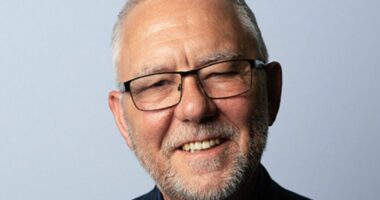Share this @internewscast.com

Women aged 40 and older should discuss when to start regular mammograms and how often to have them with their healthcare provider.
We are 21st-century women. We go to work, raise families, accept and love all people, and balance it like modern-day goddesses, but can we truly love ourselves and prioritise self-love and self-care? Do we put ourselves first? If there is one New Year’s resolution you are making this year, let that be the primary focus on your health.
Self-Care Empowers All Women
Access to information and services allows us to take charge of our health to gain choices and autonomy. Promoting a basic understanding of breast cancer, including its risk factors and symptoms, as well as encouraging self-breast examinations and regular screening, can significantly contribute to the early detection of the disease. Breast cancer is on the rise the world over, especially in rapidly developing countries like ours, because of the fast-paced lifestyles. At least once a year, see a breast specialist for a clinical examination. Breast cancer can have almost a 100% curative success rate if caught early.
Consultant Breast Specialist Dr Karishma Kirti, Oncoplastic Surgeon, shares a step-by-step guide on how to perform a self-breast examination:
- Choose a Regular Time: Pick a specific time each month to perform the examination, preferably a few days after your menstrual period ends. If you are postmenopausal, choose a day that is easy to remember, like the first day of each month.
- Stand or Sit in Front of a Mirror: Examine your breasts with your arms down by your sides. Be aware of alterations in size, shape, or contour. Watch out for dimpling, puckering, or shifts in skin texture. Assess your nipples for changes in position or any discharge.
- Lie Down: Lie on your back and put your right arm behind your head. Use the pads of the three fingers of your left hand to examine your right breast. Perform small, circular motions using different levels of pressure. Ensure a thorough examination of the entire breast, top to bottom and side to side. Pay special attention to any new lumps, thickening, or hardened knots.
- Repeat on the Other Side: Switch to your left breast, using your right hand to perform the examination.
- Check your armpits and neck: Look for any enlarged glands or swelling in these areas.
- Raise Your Arms and inspect your breasts again for similar changes.
Conclusion
If you find a lump or any other concerning changes in your self-breast examination, don’t panic! It’s important to remember that 8 out of 10 of all breast lumps are benign (non-cancerous) in nature. Nevertheless, it is essential to get it examined. Your healthcare provider may suggest additional examinations and procedures to investigate breast changes, including a clinical breast examination, mammogram, and ultrasound.
Summary
Do remember that breast self-exams should not replace regular mammograms or clinical breast exams performed by healthcare professionals. Women aged 40 and older should discuss when to start regular mammograms and how often to have them with their healthcare provider. Now that you know all the steps, start regular examinations and stay one step ahead of the disease. With breast cancer, early diagnosis is the best prognosis.













